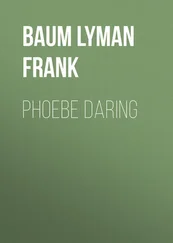I’m willing to put the problem in front of us rather than between us (or sliding it toward you);
I’m ready to listen, ask questions, and accept that I may not fully understand the issue;
I want to acknowledge what you do well instead of picking apart your mistakes;
I recognize your strengths and how you can use them to address your challenges;
I can hold you accountable without shaming or blaming you;
I’m willing to own my part;
I can genuinely thank you for your efforts rather than criticize you for your failings;
I can talk about how resolving these challenges will lead to your growth and opportunity; and
I can model the vulnerability and openness that I expect to see from you.
You can find a printed copy of this checklist on my website (www.brenebrown.com).
How would education be different if students, teachers, and parents sat on the same side of the table? How would engagement change if leaders sat down next to folks and said, “Thank you for your contributions. Here’s how you’re making a difference. This issue is getting in the way of your growth, and I think we can tackle it together. What ideas do you have about moving forward? What role do you think I’m playing in the problem? What can I do differently to support you?”
Let’s go back to the example with Susan, the principal who was armoring up for a smackdown. If she read through this checklist she’d realize that she’s not in a place to give feedback, to be a leader. But with parenting complaints stacking up on her desk, time is an issue for her and she knows the situation needs to be addressed. It can be very difficult to move into the right head and heart space to give feedback when we’re under pressure.
So, how do we create a safe space for vulnerability and growth when we’re not feeling open? Armored feedback doesn’t facilitate lasting and meaningful change—I don’t know a single person who can be open to accepting feedback or owning responsibility for something when they’re being hammered. Our hardwiring takes over and we self-protect.
Susan’s best bet is to model the openness that she hopes to see, and solicit feedback from one of her colleagues. When I interviewed participants who valued feedback and worked at it, they talked about the necessity of soliciting feedback from their peers, asking for advice, and even role-playing difficult situations. If we’re not willing to ask for feedback and receive it, we’ll never be good at giving it. If Susan can work through her own feelings so that she can be present with her employee, she’s much more likely to see the change that she’s requesting.
Some of you might be wondering, “Susan’s employee problem is pretty straightforward and small. Why would she need to spend time soliciting feedback from one of her colleagues for a problem like that?” It’s a good question with an important answer: The size, severity, or complexity of a problem doesn’t always reflect our emotional reactivity to it. If Susan can’t get to the same side of the table with this teacher, it doesn’t matter how simple the problem is or how clear the violation is. What Susan might learn from her peer is that she’s really triggered by this particular teacher or that she’s armoring up because unprofessional behavior is becoming a dangerous norm among this cluster of teachers. Giving and soliciting feedback is about learning and growth, and understanding who we are and how we respond to the people around us is the foundation in this process.
Again, there’s no question that feedback may be one of the most difficult arenas to negotiate in our lives. We should remember, though, that victory is not getting good feedback, avoiding giving difficult feedback, or avoiding the need for feedback. Instead it’s taking off the armor, showing up, and engaging.
THE COURAGE TO BE VULNERABLE
I recently gave a talk at the University of Houston’s Wolff Center for Entrepreneurship. The program, which pairs thirty-five to forty elite undergraduate students with mentors and offers comprehensive business training, is ranked as the leading undergrad entrepreneurship program in the United States. I was asked to talk to the students about vulnerability and the power of story.
During the Q&A session after my talk, one of the students asked me a question that I’m sure is often on the minds of people when I talk about vulnerability. He said, “I can see how vulnerability is important, but I’m in sales and I don’t get what that looks like. Does being vulnerable mean that if a customer asks me a question about a product and I don’t know the answer, I just say what I’m thinking: ‘I’m new and I really don’t know what I’m doing?’ ”
The students, who were all turned around listening to him, turned back in their chairs and looked at me as if to say, “Yeah, that seems lame. Are we really supposed to do that?”
My answer was no. And yes. In that scenario vulnerability is recognizing and owning that you don’t know something; it’s looking the customer in the eye and saying, “I don’t know the answer to that, but I’ll find out. I want to make sure you have the correct information.” I explained that the unwillingness to engage with the vulnerability of not knowing often leads to making excuses, dodging the question, or—worst-case scenario—bullshitting. That’s the deathblow in any relationship, and the one thing I’ve learned from talking to people who sell for a living is that sales is all about relationships.
So, while I wouldn’t take that tack with the customer, I do think there’s some value in sharing the feeling of not knowing what you’re doing with someone —whether a mentor who can offer support and guidance or a colleague who can help you learn and normalize your experience. Imagine the stress and anxiety of not knowing what you’re doing, trying to convince a customer that you do, not being able to ask for help, and not having anyone to talk to about your struggle. This is how we lose people. It’s too difficult to stay engaged in these circumstances. We start cutting corners, we stop caring, and we check out. After my talk, one of the mentors came up to me and said, “I’ve been in sales my entire career, and let me tell you, there’s nothing more important than having the courage to say, ‘I don’t know,’ and ‘I messed up’—being honest and open is key to success in every part of our lives.”
Last year I had the opportunity to interview Gay Gaddis, the owner and founder of T3 (The Think Tank) in Austin, Texas. T3 is a top integrated marketing firm that specializes in innovative marketing campaigns that cut across all media. In 1989, Gay cashed in a sixteen-thousand-dollar IRA with the dream of starting an advertising agency. Twenty-three years after opening with a handful of regional accounts, Gay has built T3 into the nation’s largest advertising agency wholly owned by a woman. With offices in Austin, New York, and San Francisco, T3 works with clients including Microsoft, UPS, JPMorgan Chase, Pfizer, Allstate, Coca-Cola, and Sprite. Her dynamic business acumen and corporate culture have led to national recognition. She has been named one of Fast Company ’s Top 25 Women Business Builders, Inc. magazine’s Top 10 Entrepreneurs of the Year, and one of the top 25 Advertising Working Mothers of the Year by Working Mother magazine. Gay and T3’s family-friendly workplace program, “T3 and Under,” was even recognized by the White House.
I jumped right into my interview with Gay by telling her that a business journalist had recently told me that, unlike leaders in corporations who are shielded by layers of systems, entrepreneurs can’t afford to be vulnerable. When I asked her what she thought about that proposition, she smiled. “When you shut down vulnerability, you shut down opportunity.”
Читать дальше






![Брене Браун - Вопреки. Как оставаться собой, когда всё против тебя [litres]](/books/436389/brene-braun-vopreki-kak-ostavatsya-soboj-kogda-v-thumb.webp)





